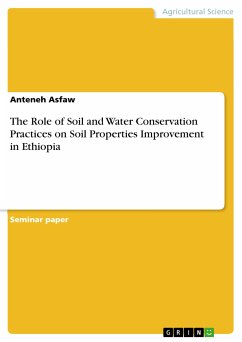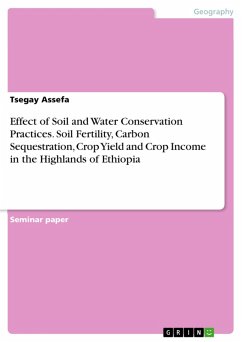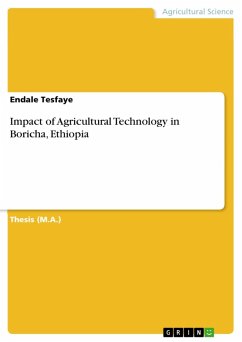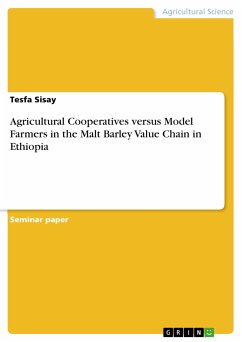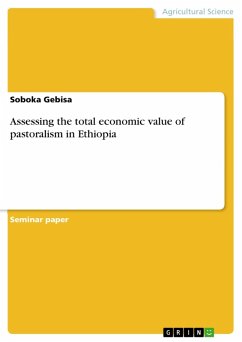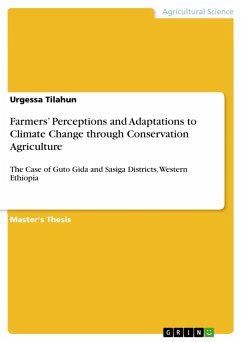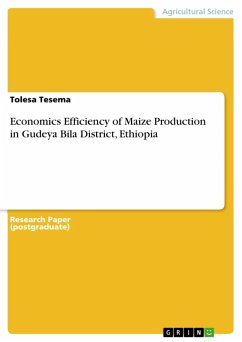Seminar paper from the year 2021 in the subject Agrarian Studies, grade: A, , course: Soil and water conservation, language: English, abstract: The review focuses on the importance of soil and water conservation practices on soil properties in Ethiopia. The study conducted in various parts of the country showed that the implemented soil bund reduced annual runoff and soil loss at different rates. Soil and water conservation have improved the soil physicochemical properties on conserved cropland (BD, SMC, infiltration rate, clay content, pH, CEC, av. K, av. P, SOC and TN) than in the adjacent cropland without soil and water conservation measures. Soil and water conservation, reduce the removal of fertile topsoil and improves soil moisture, which favors crop growth as a result grain yield of the crops were increased at various rates based on agro ecology, crop type and local management practices. In general, the effect of constructed soil and water conservation had clearly showed positive impact on soil physicochemical properties and crop yields. Therefore, to reduce soil erosion sustainably, different soil and water conservation options should be introduced and used considering agro ecology, socio-economic profile and climatic condition of the intervention area. Soil erosion is one of the several major deteriorative processes which results in soil degradation and declining agricultural productivity in Ethiopia due to dense population, high livestock density and intensive crop production in the area. Soil and water conservation practice is one the mechanism used to reduce soil and associated nutrient loss; thus, reduce the risk of production. Efforts were started through soil and water conservation strategy at a large scale on farmland since the mid-1970 and 1980's. However, soil erosion still persists and become major threats of the Ethiopian region.
Dieser Download kann aus rechtlichen Gründen nur mit Rechnungsadresse in A, B, BG, CY, CZ, D, DK, EW, E, FIN, F, GR, HR, H, IRL, I, LT, L, LR, M, NL, PL, P, R, S, SLO, SK ausgeliefert werden.

